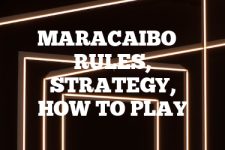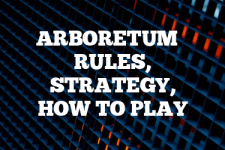Trajan: The Tile-Based Strategy Game – Rules, Instructions & Playing Tips
Introduction
Trajan is a board game that’s all about strategy and planning. It’s a game that’s been around for a while, and it’s got a lot of fans. The game is named after the Roman Emperor Trajan, and it’s all about trying to gain points by doing different activities that were important during his reign. You’ll be doing stuff like shipping goods, building, and even working in the Senate. It’s a game for 2 to 4 players and usually takes about 90 minutes to play.

The game was designed by Stefan Feld and first hit the shelves in 2011. Since then, it’s become a favorite for a lot of board game enthusiasts, garnering a lot of positive reviews and reception. The cool thing about Trajan is that it uses this mechanic called the “Mancala” (named after one of my favorite games) system for choosing actions, which is pretty unique. It’s not just about what you do, but also how you plan your moves with this system. There are lots and lots of different paths to victory, which consequently means the rules can get a bit dense, in my opinion. Nevertheless, it’s definitely a game worth trying, so let’s dive in and see what makes Trajan tick!
Quick Tip for Trajan
Always plan a couple of turns ahead and keep an eye on what your opponents are up to. It can really make a difference!
Rules for playing Trajan
Okay, let’s get into the rules of Trajan. The game is played over four quarters, each split into four rounds. You’ve got this personal board with six different action areas and a bunch of colored tokens in a tray that looks like a wheel. This is the Mancala mechanism I mentioned earlier. On your turn, you pick up all the tokens from one bowl and drop them one by one in the bowls as you move clockwise around the wheel. The last bowl you drop a token in determines the action you can take.
There are six actions: building, shipping, military, Senate, Trajan, and forum. Each action lets you do different things, like collecting tiles, moving your pieces on the board, or getting points. You’ve also got these Trajan tiles that give you special bonuses if you plan your moves right.
Points are what you’re after, and you can get them in a bunch of ways, like completing construction projects, having majorities in the Senate, or fulfilling military objectives. There are also some end-of-the-quarter checks where you need to have certain things to avoid losing points.
The game ends after the fourth quarter, and whoever has the most points wins. There’s a lot more detail to the rules, but that’s the basic idea.
Equipment and Setup for Trajan
For Trajan, you’ll need the game box which comes with a main board, player boards, tokens, and tiles. Here’s how you set it up:
- Lay out the game board at the center of the playing area.
- Each player picks a color and receives 1 player mat, 1 military leader token, 15 small player tokens, and 2 discs for tracking victory points and senate position.
- Hand out 1 Arch of Trajan and 12 action markers (2 of each color – blue, yellow, light green, orange, pink, and white) to each player.
- Organize extra action and forum tiles by their back sides, shuffle them separately, and create face-down piles near the game board.
- Shuffle demand tiles face down and remove 3 randomly from the game. Place the remaining demand tiles face down beside the game board.
- Randomly draw and place 10 forum tiles in the provinces (1 in each province), and depending on the player count, add 6 (for 2 players), 9 (for 3 players), or 12 (for 4 players) on the designated forum spaces. Add 3 extra action tiles on the yellow spaces of the forum.
- Fill all 20 spaces of the construction district with 1 construction tile each.
- Set the time marker on the start space of the time cycle corresponding to the number of players.
- Players deploy their military leader token and 1 small player token to the military camp, and 1 small player token to the worker camp. Keep the remaining 13 small player tokens on the specified area of their player mat. Each player places their Arch of Trajan on the slot marked “I” on their player mat.
- Before drawing Trajan tiles, players allocate their action markers to the trays on their player mat, filling each tray with 2 markers of any color.
- Sort Trajan tiles by category (icons), shuffle each pile, and allocate the stacks to their 6 spaces on the game board.
If you don’t have the game, you could try making a DIY version, but it’s a bit complex because of all the different pieces.
There are several types of tiles in Trajan:
- Commodity cards for shipping.
- Construction tiles for building.
- Military tiles for expanding your control.
- Trajan tiles for special bonuses.
- Forum tiles for various immediate benefits.
Players start by determining a start player through any method of their choice. The chosen start player places one of their discs on the start space of the senate track, and other players follow in clockwise order, stacking their discs on top to create a stack. The stacking order is crucial as ties are resolved in favor of the higher disc in the stack. Subsequently, players stack their other discs on the start space of the victory points track, and the order here is inconsequential.
Each player draws one bonus tile from the bag, placing it in front of them with the yellow side facing up. Two more bonus tiles are drawn and placed on the game board to the right of the senate track, also with the yellow side up. The remaining bonus tiles remain in the bag for easy access during the game.
The commodity cards are shuffled, and the pile is placed face down next to the game board. The top card is revealed, creating the first discard pile, and the next card is placed face up on the other side of the pile, forming the second discard pile. Players, starting with the start player and continuing in player order, draw three commodity cards each during this phase. They can draw cards from any pile in any combination, and when a discard pile is empty, it is replenished with the top card from the face-down pile.
In the final preparation step, all players, in turn order, select three Trajan tiles. These tiles are placed on the II, IV, and VI slots of their player mat in any order. It’s important to note that players cannot choose more than one Trajan tile of each category at this stage. With these steps completed, the game is ready to unfold, promising strategic depth and exciting gameplay.
How to Play Trajan and Game Mechanics
Playing Trajan involves a few key steps:
- Setup: Follow the setup instructions I explained above to get everything ready.
- Gameplay: Players take turns using the Mancala mechanism to choose actions and collect tiles or points.
- End of the Game: After the fourth quarter, tally up the points to see who wins.
Here are the gameplay phases:
- Choosing Actions: Use the Mancala mechanism to pick your action for the turn.
- Performing Actions: Carry out the action you landed on, like building or shipping.
- Quarter and Year End: Check for end-of-quarter conditions and score points accordingly.
I’ll go into these gameplay phases and actions in a little more detail, because it can get complex on first glance. Here’s a breakdown:
- Rearrange Action Markers (Mandatory):
- Select a tray on the player mat.
- Take all action markers from the chosen tray.
- Allocate markers one by one to the next trays in clockwise order.
- The last tray becomes the target tray.
- Right neighbor advances the time marker on the time track.
- Accomplish Trajan Tile (Optional):
- Remove a matching Trajan tile next to the target tray.
- Gain victory points and perform the special action.
- Tile is removed from the game.
- Certain Trajan tiles with icons are effective until the end of the game.
- Perform One Action (Optional):
- Execute the action assigned to the target tray.
- Action Types: a. Seaport Action:
- Draw 2 commodity cards, discard 1.
- Pick up the top card from a discard pile.
- Play 1 or 2 cards for display, refill hand accordingly.
- Ship commodities for victory points.
- Choose a tile from the forum and place it on the player mat.
- Recruit legionnaires.
- Move a leader to seize a tile.
- Relocate a legionnaire for victory points.
- Acquire and place Trajan tiles on the player mat.
- Advance on the senate track, earning victory points.
- Deploy workers to gain construction tiles.
- Perform associated actions with the acquired tile.
- Game Structure:
- Four quarters, each with four rounds.
- Player turns include rearranging markers, Trajan tile accomplishment (optional), and one optional action.
- Special activities at the end of rounds, quarters, or the game.
End of Game Round:
- The current game round concludes when the time marker reaches or crosses its start space on the time track.
- Reveal a demand tile and display it prominently next to the game board.
- The next player in clockwise order proceeds to the next game round. The time marker doesn’t change its position at this point.
End of a Quarter Year:
- Meeting the People’s Demands:
- Players must satisfy three demands using forum tiles or Trajan tiles matching the revealed demand tile.
- Forum tiles used are removed from the game, while Trajan tiles are retained on the player mats.
- Failure to meet demands incurs negative victory points.
- Penalty for unmet demands:
- 1 unmet demand: -4 VP
- 2 unmet demands: -9 VP
- 3 unmet demands: -15 VP
- Balance of Power in the Senate:
- Players calculate their influence based on votes from the senate track and senate tiles.
- The player with the most votes becomes consul, choosing a bonus tile.
- The player with the second most votes becomes vice consul, taking the other bonus tile.
- Ties are resolved in favor of higher positions on the senate track.
- Bonus tiles:
- Consul: 9 VP for owning at least 1 forum tile with a specific icon (bread, helmet, flame).
- Vice Consul: 6 VP for the same condition.
- Remove Tiles and Refill Game Board Spaces:
- Remove used forum tiles and all senate tiles.
- Introduce new bonus tiles, place a forum tile in each empty province, and refill forum spaces with new tiles.
- Turn ship tiles back to their colored front side.
- Remove the quarter year indicator.
- End of the Game and Final Scoring:
- After the final quarter year, additional victory points are awarded for:
- Each commodity card in a player’s hand: 1 VP
- Each worker in the worker camp: 1 VP
- Each legionnaire in the military camp: 1 VP
- Sets of construction tiles with identical icons: 10 VP for a set of 3, 20 VP for a set of 4
- Each bonus tile: Refer to illustrations.
- The player with the most victory points wins.
- In case of a tie, the player higher on the senate track prevails.
This outlines the concluding steps of each game round, quarter year, and the final scoring to determine the ultimate winner.
How to Win at Trajan
Winning at Trajan is all about balance and planning. You want to spread your efforts across different actions to score points in various ways. Keep an eye on the bonuses from Trajan tiles and try to fulfill them. Also, watch the demands for each quarter so you don’t lose points. It’s a game where you need to think ahead and be flexible with your strategy.
To triumph, players must skillfully manage their personal player boards, which feature a Mancala-like mechanism for selecting actions. Success in Trajan hinges on efficiently executing actions that align with the game’s six different areas: military, Senate, construction, Forum, Trajan, and seaport. Players should aim to accumulate points by completing various objectives, such as constructing buildings, fulfilling shipping demands, and achieving Trajan tiles bonuses. Additionally, timing is crucial; players must pay attention to the timing of the quarters and the demands of the people to avoid penalties that can set them back. Balancing short-term gains with long-term strategy, while also keeping an eye on opponents’ moves and potential opportunities for point scoring, is essential. Adapting to the shifting game state and optimizing your action selections with the Mancala mechanism can lead to a triumphant victory in the world of ancient Rome that Trajan recreates.
Best Strategies for playing Trajan game
For the best strategies:
- Plan your Mancala moves to hit the actions you want when you need them.
- Focus on actions that others are neglecting to get easy points.
- Use your Trajan tiles wisely for big bonuses.
- Keep an eye on the Senate for some powerful end-game points.
And for sneaky tactics, try to predict what your opponents are going for and block them if you can. It’s a bit mean, but it’s all part of the game!
Scenarios
If you find yourself in a tough spot, like missing out on key tiles or falling behind in points, don’t panic. Look for alternative ways to score, like focusing on the Senate or military. Sometimes, a change in strategy can turn things around for you.
Frequently Asked Questions about playing Trajan game
Q: How long does a game of Trajan usually take?
A: About 90 minutes, but it can vary with different player counts.
Q: Can I change my strategy mid-game?
A: Absolutely, being adaptable is key in Trajan.
Q: Is Trajan hard to learn?
A: It has a bit of a learning curve, but once you get the hang of it, it’s really engaging.
Additional Tips
Here are a few more things to keep in mind:
- Don’t ignore the forum; it can give you some quick benefits.
- Try to complete your Trajan tiles before the quarter ends for maximum points.
- Balance is key; don’t focus too much on one area of the board.
External Links
If you want to learn more about Trajan or get your hands on the official rules, check out these links:
- Official Trajan Rulebook (Warning: Dense. I summarized the ruleset above pretty well, if I do say so myself).
- Trajan Review [Video]
That’s it! I hope this guide helps you get started with Trajan. It’s a fantastic game with lots of depth, and I’m sure you’ll enjoy it. Happy gaming!

A digital native around since the early days of online gaming communities around 2001. An early contributor to the cult gaming site ClanTemplates, Adam has spent years giving free gaming resources to the community. With BoardCards, Adam is most experienced and commonly writing the articles on Strategy multi-player games like Settlers of Catan and Avalon. His first introduction to board games was via Mancala, an Egyptian-origin stone game and one of the oldest known games still played worldwide. Contact me via email



